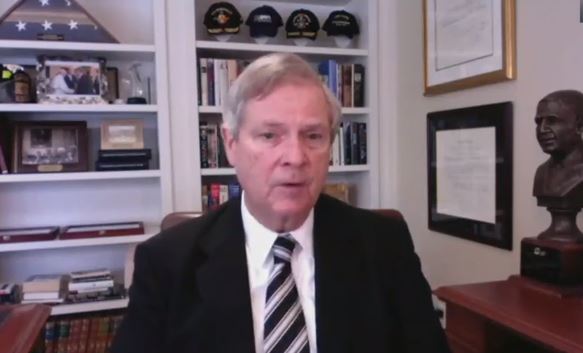Tom Vilsack’s nomination to U.S. agriculture secretary advanced unanimously out of the U.S. Senate Committee on Agriculture, Nutrition and Forestry on Tuesday and will now head to the full Senate for approval.
Vilsack, who served for eight years in the Obama administration, would be returning to USDA at a time when agriculture is in recovery mode with higher commodity prices and expanding commodity purchases from China.
During his virtual testimony before the committee on Tuesday, Vilsack outlined how agriculture has changed since he left USDA in 2016, and how farmers fit into the future of the country.
“The world and our nation are different today than when I served as agriculture secretary in a previous administration,” Vilsack said.
“Then, a great recession challenged us. Today, the pandemic, racial justice and equity, and climate change must be our priorities. Amid these mounting challenges, we are tasked with delivering fundamental services — safe and nutritious food, clean water and last-mile broadband, energy security, sound infrastructure, and business services. In rural America — which holds a special claim to USDA’s mission — we must build back better, stronger, and more resilient and equitably than ever before. We have the world’s most productive and innovative farmers. But the farm economy is suffering due to the pandemic, years of consolidation, and natural disasters brought on by climate change.”
Vilsack said the future of farming in the U.S. will depend greatly on stopping the “farm debt cycle” and creating transparency in pricing throughout the supply chain. In addition, he said he would take “bold action” to address discrimination at USDA.
“We must also recognize that the pandemic has ravaged our economy and communities. That’s why, if confirmed, I will ensure USDA is doing its part to end the pandemic.”
RIGHT PERSON, RIGHT TIME
Sen. Debbie Stabenow, D-Mich., chairman of the Senate Ag Committee, said Vilsack was the right person at the right time to lead USDA.
“When it comes to food and farm policy, we share many of the same values — from creating a stable successful agricultural economy to providing food for children and families in need to making our small towns vibrant places to live to addressing the climate crisis,” she said.
“Your deep knowledge of the department and understanding of agriculture and rural communities is needed now more than ever. I know that you will not only bring experience, but also new ideas and creative approaches to help us address the wide range of challenges facing our farm and food sector.”
Stabenow said the Trump administration fell short on a number of ag fronts during the COVID-19 pandemic.
“Many essential food workers were on the front lines without adequate protection; farmers had no choice but to destroy the crops they could not sell, millions of families still don’t have enough food to eat, and food banks are overwhelmed with unprecedented demand,” she said.
Vilsack said the Biden administration’s push to address climate presents an opportunity for farmers. In particular, he said farmers would be willing parts of the solution.
“If it’s voluntary and incentive based, you will see farmers and ranchers cooperate extensively,” he said.
Vilsack brought up the idea of establishing an advisory group of farmers that could help put together a carbon sequestration plan to compensate farmers for capturing greenhouse gases in soil.
Sen. Charles Grassley, R-Iowa, said Vilsack’s experience during the 1980s agriculture crisis will help USDA address current challenges from the pandemic.
“We’ve seen higher rates of food insecurity, continued food supply chain disruptions and family farms struggling to balance their books,” Grassley said. “Should he be confirmed, the experience from the 1980s farm crisis will serve him well at this time of family farms being under duress.”
Vilsack also took several questions from Senators on livestock industry issues, including country of origin labeling (COOL) and solutions to address price transparency. Vilsack said he would consider reimplementation of COOL.
“Consumers want to know where their food comes from,” Vilsack said. “We attempted on three occasions to strengthen the country of origin labeling unsuccessfully, because the WTO challenges by our Canadian friends. I am absolutely willing to listen to anybody and everybody who’s got an idea about how we can get to a point where the WTO doesn’t necessarily slap it down, that creates retaliatory impacts on American agriculture.”
Vilsack also added that he would use the office of Ag Secretary to strengthen the integrity of the cattle market. “We’re going to look at every vehicle we have to make sure that we have open, fair and transparent markets,” he said.
The National Association of Wheat Growers also said in a statement the group has a good relationship with Vilsack. NAWG CEO Chandler Goule said Vilsack “demonstrated his qualifications” during the hearing.
“During his previous tenure as secretary, NAWG had a great working relationship with Secretary Vilsack and his staff and look forward to him resuming his role at USDA,” Goule said. “There are many challenges confronting wheat farmers across the country, and it is critical that the incoming administration fill the many staff vacancies at USDA.”
###
DTN/Northern Ag Network


